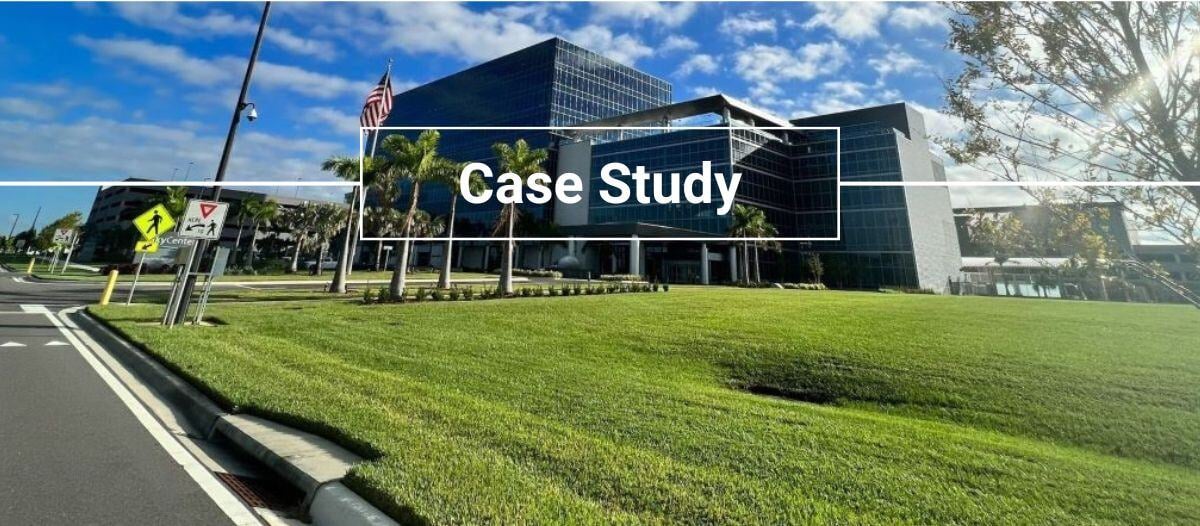Out of the Shadows
Putting FM in front in 4 steps

Nirvana for a facility manager can be described in three simple words: defect-free projects.
Too often, FMs are plagued by projects which are completed, yet remain full of defects, issues, design flaws and other frustrations.
Opening day, the ribbon is cut, celebratory catering is arranged and everyone takes a well-earned break. Not so for the FM. Soon, the queries will start to trickle in: the office is too hot, the customer area too cold, lights too bright, carpet too red and to top it all off, the filing cabinet does not fit the standard folder sizes the office uses.
The sheen and sparkle of the newly opened premises is lost. Not to fear, the FM will listen empathetically to these struggles and will try hard to get the trades to return and fix the problem. If that fails, they will spend money to adjust the air conditioning, dim the lighting and make sure the furniture is fit for purpose.
How counterproductive and frustrating.
Too much time and money can be wasted in accepting projects that have problems. Why put so much effort into refurbishing or building a new site, only to have it experience problems afterwards, disappointing the occupants and taking the focus off the achievement of construction?
It turns out that nirvana is not a fable and that defect-free projects are possible – with the right mix of process, understanding and engagement, the project can have it all. It just takes some courage to come out of the shadows.
Find the decision maker
The first step in the path to Nirvana is to seek out the decision maker. Who is responsible for the delivery of projects within the organization? Is it a single person overseeing a team or is it a steering committee? Look for a decision maker who is senior enough to influence change, but not too senior to be removed from the details. If unsure, find out from the project managers who are responsible for delivery.
➡️Pro tip: The project manager is not the decision maker at this stage of the game. This is not a slight on project managers; however, they are too far into the process to influence change outside of minor tweaks to scope. Typically, project managers will see enquiries by the FM to be more of a nuisance or hindrance to progress, as opposed to it being constructive, as change during the delivery of a project can impact two key factors: time and cost. While there are rare exceptions to this, even project managers with the best intentions have an agenda – delivering the brief on time, on budget and to a good standard of quality.
Once the correct decision maker is found, it is time to present the case. Make sure this is done informally wherever possible … see if it can be timed with a coffee.
Present evidence with empathy
In his classic book, “How to Win Friends and Influence People,” Dale Carnegie wrote, “Any fool can criticize, condemn or complain – and most fools do.” He later writes that it takes character and self-control to be forgiving; this discipline will pay major dividends in your relationships with people.
FMs must possess a significant level of emotional intelligence, be able to actively listen and be empathetic to others’ needs. These skills must be applied when approaching the decision makers with evidence and will set the scene and foundation for change.
➡️Pro tip: Illustrating the challenges and demonstrating the business impacts which stem from project defects must be done tactfully and professionally. If this is not done, and a case is presented from a perspective of negativity and complaint, the decision maker will be more likely to clam up, resist the feedback and find a reason to move on with their day.
Displaying a growth mindset, that is, having a belief that improvements can be made through hard work, good strategies and input from others will also help fuel change and will service all endeavors.
Make it clear that by working together toward a mutual goal of defect-free projects, the end customers (i.e., the building occupants and users) will benefit everyone, including the business or client.
The mutual perception within the business will improve, as the overall quality of projects will increase, building occupants will not have the risk of downtime or inconvenience and the business will be better off financially – as the need to fix things after the project, or have a situation reviewed will be eliminated.
Success after this meeting is defined by having the support of the decision maker to move on to the next step – defining a process and seeing it implemented. Make sure that the decision maker advises who will need to work on this before the meeting is finished. Also, do not rely on the decision maker to make the introductions. Reach out first and without fear.
Define a process and implement
Subtly, every organization is different in terms of their project delivery processes; however, a new site can take several years from executing initial agreements through to opening. Refurbishment projects for individual sites take around six months from preplanning and scoping through to relaunch. The FM should be familiar at a high level with this process and the relevant milestones within the planning and delivery phases. Knowledge of these phases will make it easier to determine the right points where some level of interaction is required and where it is more appropriate to step away.
The key to engagement in this process is balance. Try to influence and provide feedback to encourage change but not be responsible for delivery or feel the need to be involved end to end – otherwise it will be overwhelming. Typically, there are four key points where an FM can add the most value during a project.
First is the design phase.
Does the organization have standards and typical drawings from which architects and consultants draw their instruction? If so, is there a design manager or team responsible for these documents? How do they invite feedback? In some organizations there is a committee which debates and oversees these. If the set points for the air conditioning are always wrong, the fabric on the chairs wears out in one month or the floor is hard to clean, these bits of feedback help the design team to establish robust standards to be delivered.
➡️Pro tip: If there is an established process for providing feedback, or ongoing committee meetings for design changes, work within that – otherwise feedback may not be guaranteed to be received.
Second is the stakeholder engagement phase.
This phase again depends on the FM having quality relationships. Where a project is being implemented at an existing property, the FM should already have some familiarity of its idiosyncrasies. Having this knowledge provides a natural inroad with the project manager, as it will make their life inherently easier if the FM provides all their intel and insights about the property and its characteristics during planning phases. In return, the project manager should be able to share a detailed scope of their work, how much or how little is being done, and how it will affect the property. Providing feedback at this stage to influence an outcome is ideal, as it typically involves little impact to time, quality and cost.
New builds are more complex. Again, depending on the relationship the FM has with the project manager will determine the level of access that they have on the site. Typically, it will be okay not to attend preplanning meetings for new builds if the design phase activity described above has been done well.
➡️Pro tip: Find out the accepted process for the project manager who is delivering and time feedback and visits with them.
Third is the pre-project completion inspection.
This activity is the most important phase of delivering nirvana.
It is critically important to visit the site at least twice before the practical completion of the project – while trade workers are still there. This must be done with the project manager so that feedback can be recorded, decisions made and instructions provided. While it is not the FM’s job to critique the project or conduct a detailed defects inspection, these pre-completion inspections provide an opportunity to see the project’s progress and any glaring opportunities that can be corrected or implemented before trades leave site.
➡️Pro tip: Keep a record of the key items identified during the visit and make sure these are confirmed in writing together with the project manager.
Finally, is the defect inspection and handover phase.
Now, hopefully if the work has been done to reach this phase, the final defect inspection and handover with the project manager should be less painful – if not pain free. Defects identified while trades were on site should have been corrected and resolved, with the big-ticket items sorted out. The FM should be able to breathe a sigh of relief with only a handful of minor defects to close out. Hopefully, there are none.
➡️Pro tip: A central list of defects should be maintained by the project manager. Multiple lists cause confusion for everyone and will only cause more heartache and delays.
Iterate, improve & repeat
While this process might seem straightforward, it is anything but. A process can only improve with persistence and patience. Make sure that there is a feedback loop with all completed projects to the design team so that improvements can be made. There is typically a post-implementation review that is completed, so use that process to record feedback.
Do not expect the project manager to provide feedback to the design team or other stakeholders as a matter of course, as they typically focus on their next job immediately after they finish. Also, take the time to compliment the project manager and provide positive feedback to the senior decision maker(s) involved. This will cement the process and make stakeholders even more inclined to heed feedback in the future.
Gradually, the changes made in the process will improve the overall workflow, make the defects disappear and finally, Nirvana can be achieved.

Read more on Communication , Leadership & Strategy and Project Management or related topics Project Closeout , Project Management and External Awareness
Explore All FMJ Topics









